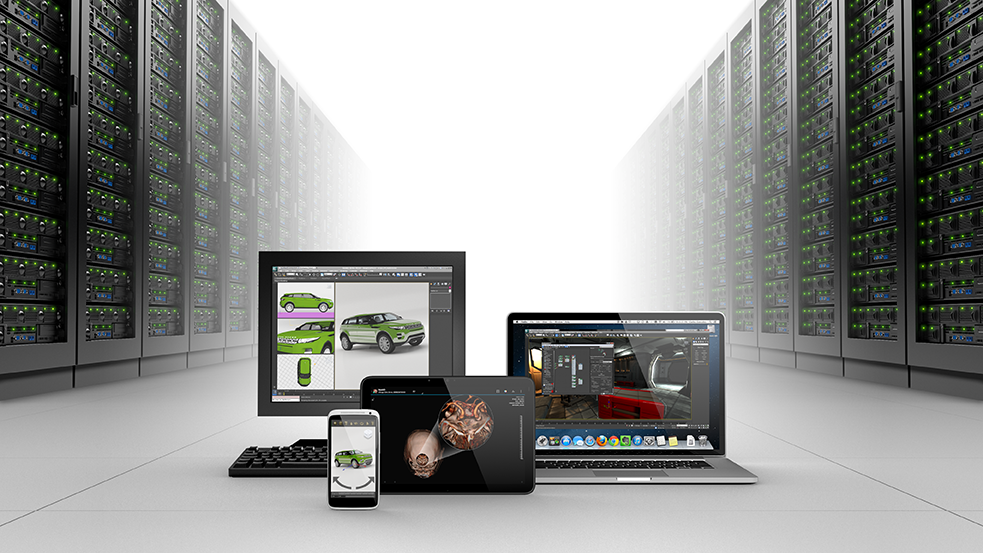As with many industries, the history of the computing business often follows a circuitous path. In the early days, centralized mainframes provided the computing horsepower to dumb terminals. Then came independent PCs, followed by the transition back to server-based computing with thin clients---storage-free devices that essentially served as the graphics front end for the computing workloads being performed on the server.
While thin clients made a reasonable impact for many businesses---particularly those in regulated industries---they didn't ever provide the kind of transformation to the computing environment that many had predicted. Full-powered PCs, it turns out, were still essential for many tasks, particularly those that were dependent on graphics, so we saw a renewed emphasis back on PCs.
Now, we've moved into the era of mobility, where smartphones have become increasingly powerful compute devices. Arguably, however, smartphones (and tablets) have actually become next generation thin client/virtual client devices, with much of the computing experience they deliver coming from cloud-based services.
As great as these mobile devices may be, however, there's still a very strong need for full desktop computing experiences in business environments. And in that great circle of ongoing compute evolution, we're now seeing a new generation of server-based, graphics virtualization-powered, cloud-based computing solutions enabling a whole new round of virtual clients, thin clients, and other remote computing models.
Some of the early work in this area was enabled with AMD's virtualization-enabled server-focused GPUs. Early versions of virtual desktops could only virtualize the CPU, and not the GPU, so the first efforts to virtualize GPUs in servers several years back were a critical step forward.
More recently, nVidia's Grid 2.0 efforts are bringing a second generation of workstation-level graphics to servers and virtual desktops. Today's announcement by Microsoft and nVidia of support for Grid in Microsoft's Azure cloud computing platform extends the range of options that companies now have to use new computing models to deliver desktop experiences.
Businesses can now choose to deliver desktop capabilities from their own internal servers, from shared external servers, from 3rd parties that offer "desktops as a service," and several other variations on these basic themes. More importantly, IT departments are able to deliver an experience to their end users---both inside and outside of the company's physical walls---that can truly match what only standalone PCs and even workstations were once able to do.
IT departments are now able to deliver an experience to their end users---both inside and outside of the company's physical walls---that can truly match what only standalone PCs and even workstations were once able to do.
This is key, because for all the benefits of the virtual client/thin client computing model---particularly on security, management of the devices, management of the applications, and operating systems running on those devices---the actual end user performance often suffered.
Agonizingly slow screen redrawing, tepid browsing experiences, and other productivity-killing hassles turned some early thin client installations into painful experiences for end users, as well as the IT departments who chose to deploy them. Thankfully, numerous improvements along every stage of the virtual client computing chain have made those types of experiences a distant memory.
Improvements in the performance of the thin client devices themselves, from vendors such as Dell/Wyse and HP, to enhancements in VDI architectures and protocols from Citrix, VMWare, and Microsoft, to software and hardware refinements on the compute, storage, and network stacks within data centers, have all come together to deliver a significantly more usable virtual client/thin client experience. Plus, thin clients are no longer limited to desktop devices---there's more and more experimentation with clamshell-styles and other mobile form factors.
As a result, there's an expanding range of companies from industries well beyond thin client stalwarts, such as health care, financial, and government, who have started to embrace the virtual client/thin client computing experience. Mainstream companies in industries of all types and sizes continue to explore and invest in these new evolutions of thin clients and virtual clients.
Admittedly, the virtual client/thin client story is not a new one, and for some IT decision makers, the devices may bring back painful memories. Nevertheless, as critical refinements are made to these virtual client computing models, it's worthwhile for companies to reassess their stand on virtual clients and thin clients and give them a fresh new look. They might be surprised at what they find.
Bob O'Donnell is the founder and chief analyst of TECHnalysis Research, LLC a technology consulting and market research firm. You can follow him on Twitter @bobodtech. This article was originally published on Tech.pinions.
